The design process—brief, concept planning, sourcing, implementation, and final reveal, is at the heart of every creative project. Whether it’s a complete renovation, refreshing a single room, curating a cozy corner, or decorating for a special occasion, this method ensures intentional, cohesive, and stunning results.
For me, one of the most rewarding aspects of design is blending tradition with contemporary aesthetics. This is particularly meaningful during festive seasons like Navratri and Diwali, where every element—rangolis, lamps, or statement décor piece, adds layers of warmth and purpose to celebrations.
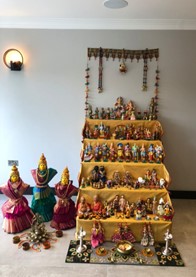
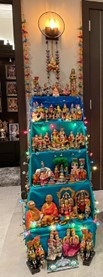
Navratri holds a special place in my heart, evoking cherished memories of family traditions and festive creativity. In South India, Navratri is celebrated with an artistic display of dolls and figurines, often arranged on steps, known as Golu. These displays narrate stories from mythology, everyday life, or significant moments such as weddings, temple visits, or scenes of rural life.
Over the years, I’ve embraced Navratri as a design challenge, an opportunity to merge tradition with creativity through careful concept planning, meticulous execution, and attention to detail. Each display, whether rooted in traditional arrangements or exploring experimental setups, becomes a canvas for innovation.
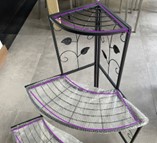
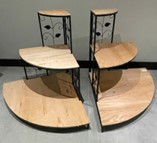
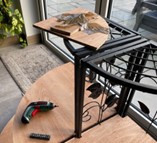
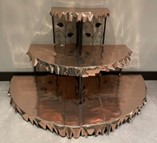
From sourcing the perfect display stand to precisely measuring and arranging each element, every step is thoughtfully planned and executed. The process is as much about problem-solving as it is about artistic expression, ensuring that each piece fits seamlessly into the larger vision, ready to be unveiled as a cohesive and meaningful display.
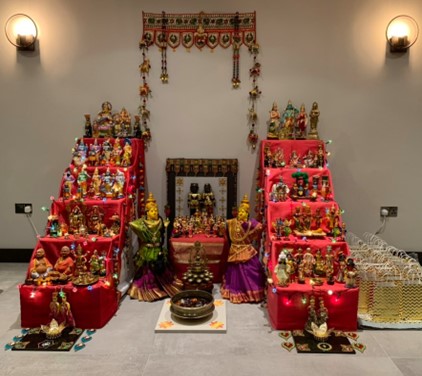
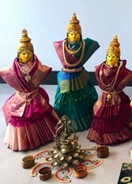
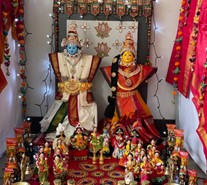
While traditional stepped arrangements remain a staple, I’ve experimented with splitting the steps into two units, incorporating lamps draped with sarees as focal points, and even exploring unconventional layouts.
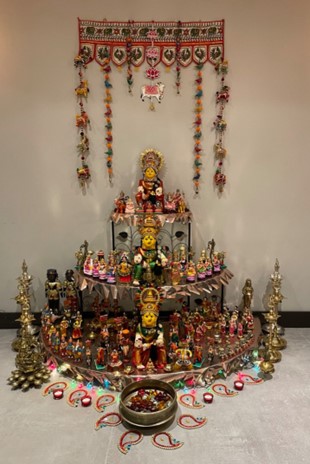
For instance, one of the Navratri display was centered around a semicircular arrangement, with the three divine mothers, Durga, Lakshmi, and Saraswati, as the focal point. These goddesses embody the essence of womanhood and are celebrated as the trinity of power, prosperity, and wisdom.
The semicircular display highlighted the significance of these three aspects, reminding us of the importance of
balance. This arrangement reflected both the spiritual essence of Navratri and the creative process of designing a space that honours tradition while embracing innovative aesthetics.
Last year’s Navratri display took a unique turn by combining traditional Golu steps with a curved half-moon shaped plant stand, creating a striking arrangement. The theme, Dasavatharam, celebrated the ten avatars of Lord Vishnu. The central steps featured Lord Vishnu with his consort, Goddess Lakshmi, surrounded by scenes and celebrations from the Dasavatharam. The half-moon stand showcased the ten avatars, paired with corresponding depictions of their significant moments. Thoughtfully chosen accessory colours enhanced the essence of each avatar, bringing the theme to life while blending tradition and innovation in a vibrant and meaningful display.
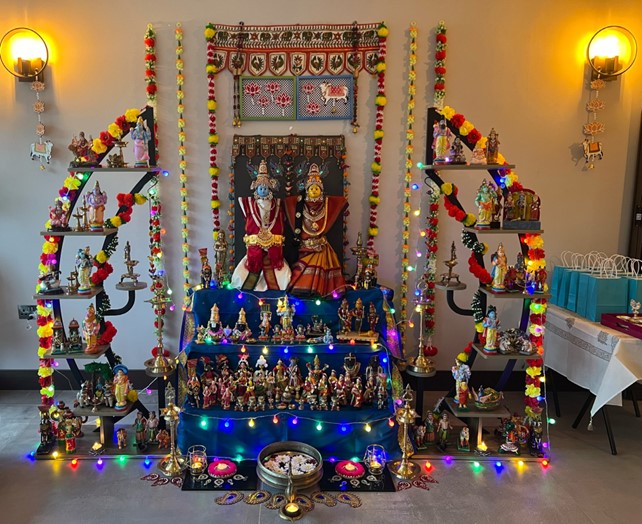
Every display is curated to honour cultural roots while embracing contemporary aesthetics. Sharing these displays and the process behind them has become a way for me to celebrate Navratri creatively. Each year’s project not only deepens my connection to this festival but also showcases how design principles are universal, transcending the boundaries between professional projects and personal traditions.
Through the images accompanying this post, I hope you’ll find inspiration in how a thoughtful approach to design can transform even the smallest spaces or events into meaningful expressions of culture and creativity.
